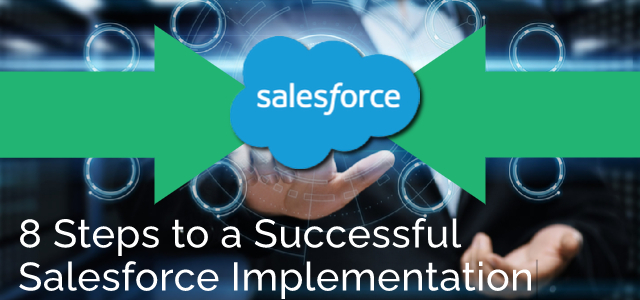8 Steps to a Successful Salesforce Implementation
Estimated reading time: 4 minutes
A Salesforce® implementation can be a complex and daunting process. Even if you’ve already implemented Salesforce before, starting a new implementation from scratch can present new challenges. To ensure that your implementation is successful, there are certain steps you need to follow. In this AdVic® Salesforce Blog, we’ll discuss eight important steps to follow when starting a Salesforce implementation.
1. Define Your Goals and Objectives
The first step in any Salesforce implementation is to define your goals and objectives. What do you want to achieve with Salesforce? What business problems are you trying to solve? What are the specific outcomes you hope to achieve? By defining your goals and objectives, you can ensure that your implementation is aligned with your business needs and objectives.
2. Create a Roadmap
Once you’ve defined your goals and objectives, you need to create a roadmap for your implementation. This roadmap should include a detailed plan of action that outlines the steps you need to take to achieve your goals. It should also include timelines, milestones, and a budget.
3. Identify Stakeholders
Identifying stakeholders is an important step in any Salesforce implementation. These are the people who will be affected by the implementation, including executives, managers, users, and IT staff. It’s important to involve stakeholders early in the process to ensure that their needs are considered and that they are supportive of the implementation.
4. Design Your Data Model
The data model is the foundation of your Salesforce implementation. It’s important to design your data model carefully to ensure that it meets your business needs and is scalable. You should consider how your data will be organized, how it will be used, and how it will be accessed. This will ensure that your implementation is optimized for performance and usability.
5. Configure Salesforce
Once you’ve designed your data model, you need to configure Salesforce to meet your business needs. This includes setting up custom objects, fields, and workflows. You should also configure security settings and user access to ensure that your implementation is secure and compliant with your organization’s policies.
6. Test Your Implementation
Testing is an important step in any Salesforce implementation. You should test your implementation thoroughly to ensure that it meets your business requirements and that it is free of bugs and errors. This includes unit testing, integration testing, and user acceptance testing.
7. Train Your Users
Training your users is essential to ensure that they are able to use Salesforce effectively. You should provide training on how to use the system, how to enter data, and how to run reports. You should also provide ongoing training and support to ensure that users continue to use Salesforce effectively.
8. Monitor and Optimize Your Implementation
Once your Salesforce implementation is live, you need to monitor it regularly to ensure that it is meeting your business needs. This includes monitoring performance, usage, and adoption. You should also optimize your implementation over time to ensure that it continues to meet your evolving business needs.
Summary
Starting a Salesforce implementation can be a challenging process. However, by following these eight important steps, you can ensure that your implementation is successful and meets your business needs. By defining your goals and objectives, creating a roadmap, identifying stakeholders, designing your data model, configuring Salesforce, testing your implementation, training your users, and monitoring and optimizing your implementation, you can ensure that your Salesforce implementation delivers the business outcomes you expect.
Whether it’s a Salesforce implementation, enhancement, or integration project you are mulling over, let the AdVic® U.S.-based Team – who works on your hours – do the heavy lifting by addressing your complex challenges through our cloud, integration, and data expertise, leaving you to what you do best – servicing your customers. Let’s talk about your Salesforce project today!
Related Resources:
Inside a Salesforce Implementation: From Initiation to Go-Live
When Outsourcing a Salesforce Implementation Makes Sense
Sales Cloud Implementation Best Practices
Tips for a Successful Salesforce Implementation
Subscribe to the AdVic Salesforce Blog on Feedly:



